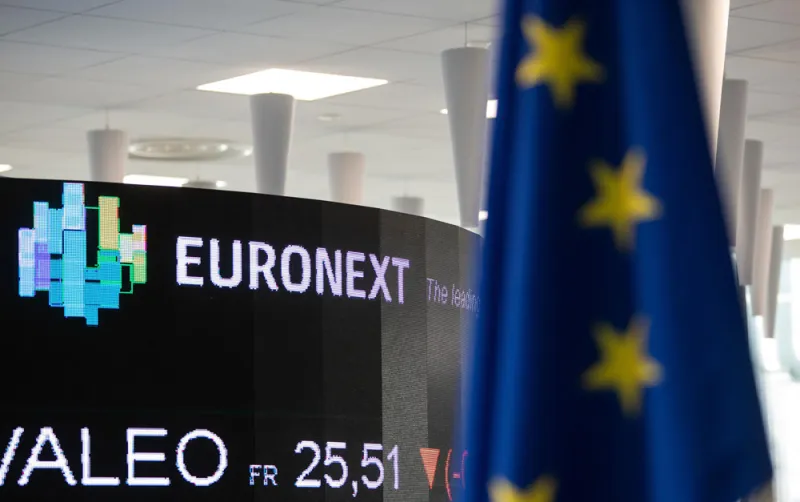American ETF giants have carved out a prominent role in the European market. Now they’re eyeing a long-dormant but potentially significant avenue of growth: the continent’s retail investors.
Big American ETF companies are huge players in the European market. As in the US, iShares is the dominant player overall, holding almost half of ETF assets under management (AUM). Vanguard, Invesco, and SPDR are also to be found in the top ten providers by AUM, along with European providers like Xtrackers, Lyxor, and Amundi.
But while there are many similarities between Europe and America, there exists one very big difference: the dominance of institutions.
The European ETF retail market has long lagged its US counterpart. While there are no solid statistics on ETFs by client type, the consensus among industry players is that more than 80 percent of ETF assets in Europe are in the hands of private banks, wealth managers, pension funds, hedge funds, and other types of institutional investor, says Kenneth Lamont, a passive funds analyst at Morningstar Europe. In the US, by contrast, it is believed the breakdown is more evenly split.
While the European retail investor community is relatively untapped by ETF providers, most agree they could play a key role in the growth of the market looking forward, Lamont says. He thinks the major barriers to retail uptake in Europe have been education and technology. Both of these are slowly being broken down, he says, with most stockbroker services in Europe now offering ETFs for individual investors, some with very competitive trading commissions. Fund houses, roboadvisors, commercial banks, and others are increasingly offering ready-made portfolios for retail investors who may be unwilling to build such portfolios themselves, he says, often mixing bond and equity ETFs to suit particular risk profiles.
This has taken place against the backdrop of broader regulatory change that could be positive for the retail side.
Lamont highlights the EU’s Markets in Financial Instruments Directive (MiFID) II, which came into force in January 2018. The wide-ranging directive aims to improve transparency through the reporting of ETF trades, including increased reporting requirements for over-the-counter trades, allowing for a fuller understanding of fund liquidity. While it stops short of forcing the creation of a consolidated tape for the reporting of all trades, Lamont notes that a consortium of the major ETF players on the continent, including iShares, SPDR, Lyxor, and DWS have partnered with Bloomberg to create one focused on ETF trading.
The European market can’t be viewed as a single entity, says Thomas Merz, Vanguard’s head of distribution for continental Europe. The British market is significantly different to its continental counterparts, for example, with the latter traditionally having more of a “retrocession” model, where asset managers pay fund distributors in return for selling their products, giving intermediaries an incentive to sell such products. Such inducements are somewhat restricted under MiFID II when it comes to discretionary solutions. This could be an opportunity for ETFs, which are not sold on a retrocession-based model, as intermediaries would be incentivized to offer clients the full range of funds available in Europe. A fee-based system like that prevalent in the US – where the adviser is paid directly by the client – “will gain further popularity,” Merz believes, through digitalization and new efforts by regulators to enhance transparency.
Dan Draper, Invesco managing director and global head of ETFs, notes that ETFs carry certain tax advantages in the US that aren’t seen in Europe. There is a broader, cultural element at work too, he says, with the US having a longstanding tradition of equity ownership among retail investors. However, MiFID II could help change this, he believes, with increased transparency spurring greater knowledge of, and growth in, ETFs. “There’s been more of an equity culture developing,” he says.
Matteo Andreetto, head of the SPDR ETF business for Europe, the Middle East, and Africa at State Street Global Advisors, is optimistic for the growth of the European market. The new regulations provide a significant advantage for the ETF container, he says, and could help encourage the development of a broader European ecosystem, as opposed to the existing emphasis on national champions. Investors in Europe are likely to increasingly “leverage the transparency and tradability of the instrument,” he believes.
His colleague Noel Archard, global head of SPDR product at SSGA, has been working in the ETF market for 15 years. He has noted a significant transition globally in the past two years – notably in Europe – with asset managers increasingly offering ETFs to their clients and banks and other institutions stepping into the market and launching their own products. ETFs could be attractive to individual investors for the same reasons they have gained favor in the institutional space, he says: transparency and convenience.
“The use of ETFs is moving slowly but firmly into the retail sphere,” Archard says.






